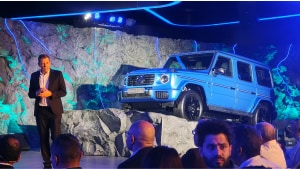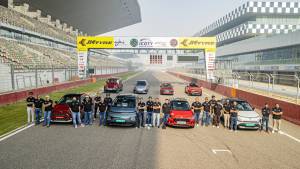2021 Mercedes-Benz EQS first drive review
I'm about to do something that I'm certain will elicit a look of disapproval from the weekend driver in the Alps. Perhaps I'll even see an angry fist waved at me by a law-abiding, stickler-for-the-rules piloting a slick sports car. But since we're a couple of hours behind schedule, and I have a cross producer sitting in the rear seat of the car urging me to hurry up, I cave. There will be no driving up the mountain pass till I find a relatively safe place at which to pull a U-turn. Instead, this very spot at which I am, on a narrow Alpine road with a drop to one side and mountain wall to the other, will have to do. I switch the indicator on, turn the steering wheel all the way to the left, and wait for a gap in the traffic. When I spot one, I gently press down on the accelerator and feel the massive Mercedes-Benz EQS 580 4Matic beginning to move in the direction I've pointed it.
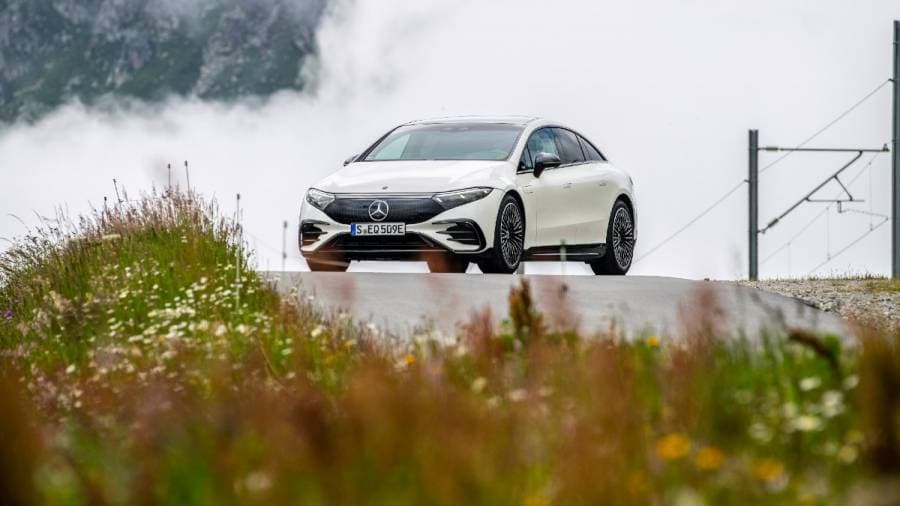
Now, the EQS is a long car; 5.216 metres long to be exact. And I'm on a narrow road; I didn't have the time to hop out, find a tape measure, and check exactly how wide it was, but let's just say I'd have only been confident of making that turn in one go in some manner of hatchback. As I inch ever closer to the edge though, I start to feel like I might not have to put the car in reverse after all. The cameraperson sitting in the front passenger seat looks askance at me, but just as he's about to say something, the car manages to clear the edge of the road completing the turn nicely. "I didn't think you'd make it," he says with a grin on his face. I cackle in response before hightailing it out of there sufficiently pleased with the way the EQS's rear-axle steering works. Though I hadn't quite believed them, the engineers at Mercedes had been absolutely right when they'd said that this behemoth would do just fine on the tight and twisty Swiss mountain roads.
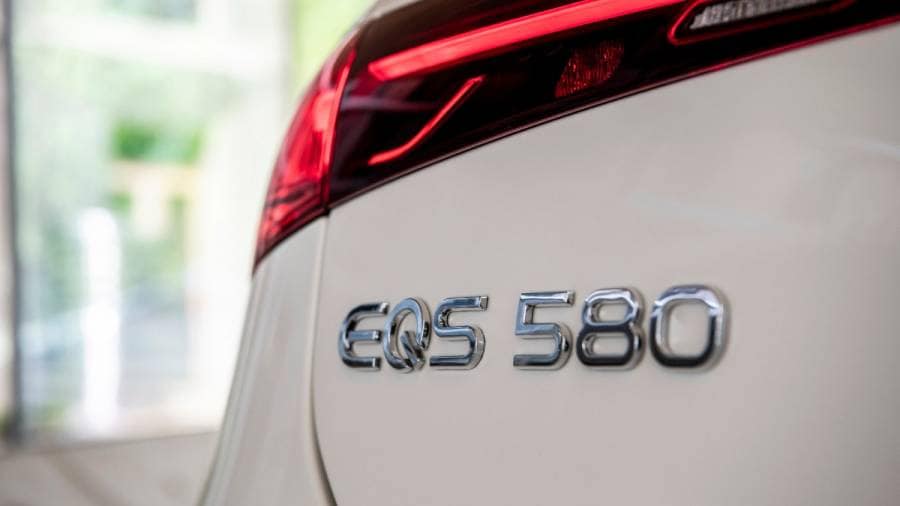
Let's start at the very beginning, though. The EQS is the first all-electric car that Mercedes has designed and built from the ground up using their new Electric Vehicle Architecture (EVA) platform. Which means it isn't a combustion-engined Mercedes that has been given the EV treatment. Instead, with the EQS, Mercedes decided to develop an all-new luxury electric vehicle, albeit one that remained true to the values of their flagship S-Class. With that information in mind, it's easy to understand why the car doesn't look like a typical S-Class. There was no need to make room for any manner of ICE, so the bonnet is shorter and sweeps right into the angled windscreen, which then merges into a somewhat gently curved roofline that then ends in a slightly high-tailed rear. Viewed side-on, the lines appear to have stayed true to the renderings of the Vision EQS that we'd seen a while ago. It's part of what Mercedes calls their new "one bow design", aimed at making the car as aerodynamic as possible. This is vital because a slippery car is one with less resistance, and in turn is more efficient, which equals a very long range. There are a lot of unique touches to make sure that the car is as slippery as it can be, too. For example, when the car is in motion, the multiple spokes on the wheel rims effectively act as a solid metal plate, cutting down on drag. The vents on the front bumper, which you don't often see on EVs, channel air into the wheel arches and out over the wheels in a bid to cut down on resistance. An aerodynamicist from Mercedes even pointed out the ridge on the outer edge of the rear tail-lamps, which I'd believed to be a question of aesthetics, had been placed there specifically in a quest for aerodynamic supremacy. What all of this ultimately leads to is a drag coefficient that can be as low as 0.20, making the EQS the most aerodynamic production car in the world-beating out the somewhat sleeker-looking Tesla Model S. Although, to be exact, this world record-beating drag coefficient was achieved in the rear-wheel drive EQS 450+ with a very specific AMG kit and specially developed wheels.
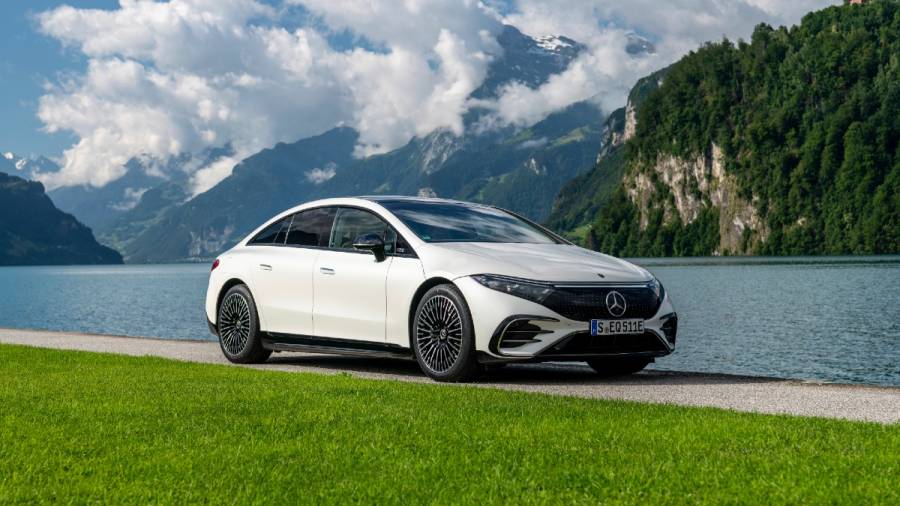
Speaking of which - there are two versions of the EQS available. The base model is the rear-wheel-drive EQS 450+, with a motor mounted on the rear axle that makes 333PS of power and 568Nm of torque. Then there's the all-wheel-drive EQS 580 4Matic that I drove, which has two synchronous motors that deliver a combined power of 523PS and a torque of 855Nm. Both versions come powered by a 107.8kWh high-density battery, which Mercedes claims offers a WLTP range of 780km in the 450+ and 676km in the 580. Impressive, especially given that the car weighs around two and a half tonnes, and proof that all that aero work was not for nought.
What do those power figures translate to behind the wheel, though? Well, the EQS 580 doesn't need a whole lot of prodding in order to get off the line very quickly. The power delivery is immediate, the acceleration is quick, and the car's performance certainly belies its bulk. Mercedes claim a 0 to 100 figure of 4.3 seconds, and the car can make it all the way to an electronically limited top-speed of 210kph.
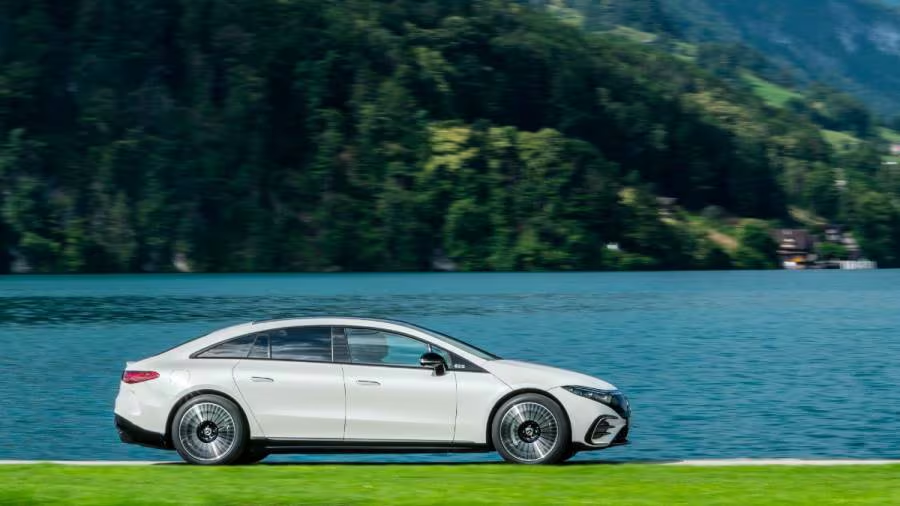
Also impressive is that for a machine of its size, it handles very well. There's a precision and an almost point-and-shoot quality to the EQS that I wasn't expecting. This is caused in part by the rear-axle steering that I've already mentioned. As a standard, the rear wheels in the EQS turn to 4.5 degrees, but you can pay to unlock them to 10 degrees. At speeds of below 60kph, the rear wheels turn in the opposite direction of the front wheels, making the car easier to manoeuvre and park in tight spaces. And at speeds above 60kph, the rear wheels turn in the same direction as the front wheels, making the car feel like it's moving on rails, improving the handling and stability all at once. Luckily, the car I was driving did have the rear-wheels capable of turning to 10 degrees, which meant it had a turning circle of just 10.9 metres. This also meant that it was worry-free and dare I say fun to drive on the twisties. That's not all, cross speeds of 120kph while in "sport" mode, and the car reduces its ride height by 20mm - a move that also reduces wind resistance and increases high-speed stability. The fact that the car's battery is built into the floor, means that the centre of gravity is low and body roll is virtually non-existent, all of which contribute to the way it behaves on the road. And while mountain roads might have been fun to tackle in the EQS, I can't say the same for arrow-straight Autobahns. The EQS isn't the most involving car to drive, but it certainly is a worry-free one.
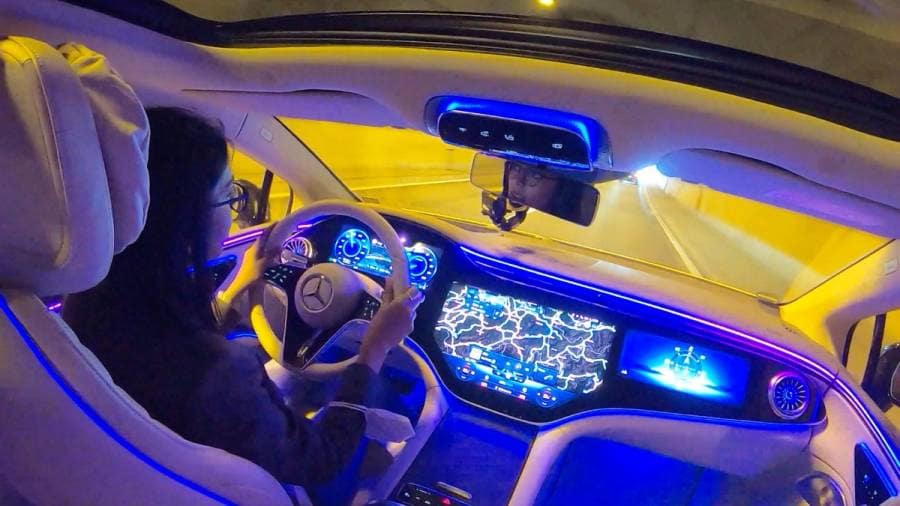
Now a part of the reason that the EQS lends itself to a relaxed driving experience, is because the car isolates its occupants from any manner of tyre noise, wind noise, and of course the lack of an engine means that there's no engine noise to speak of. Mercedes has put in a few artificial sound profiles - with names like Silent Waves, Vivid Flux and Roaring Pulse - if you really feel the need for some manner of auditory stimulus while you're behind the wheel. Although, as far as I'm concerned, the sound of silence equals peace of mind, which trumps any artificial sound the car could potentially come with.
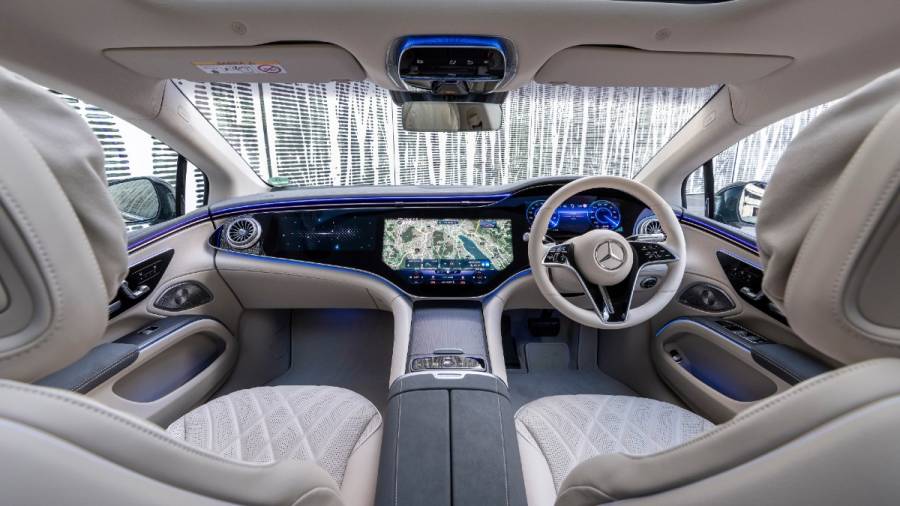
Of course, this being their flagship luxury EV, Mercedes has gone all-out in terms of the car's interiors. It's been a while since I've looked at so many surfaces and bits and bobs and felt that it was entirely justified to use the adjective "plush" repeatedly. While the materials used in the interiors look and feel expensive, Mercedes says that some amount of recycled material has been used on the inside, allowing the EQS to at least partially check off the sustainability box. The front seats are comfortable, and the driver gets a convenient heads up display, in addition to a digital display for the dials. And the steering wheel also features touch-sensitive controls and a few other essential buttons. There's a screen for the front passenger too, and in between these two screens is the multimedia infotainment unit.
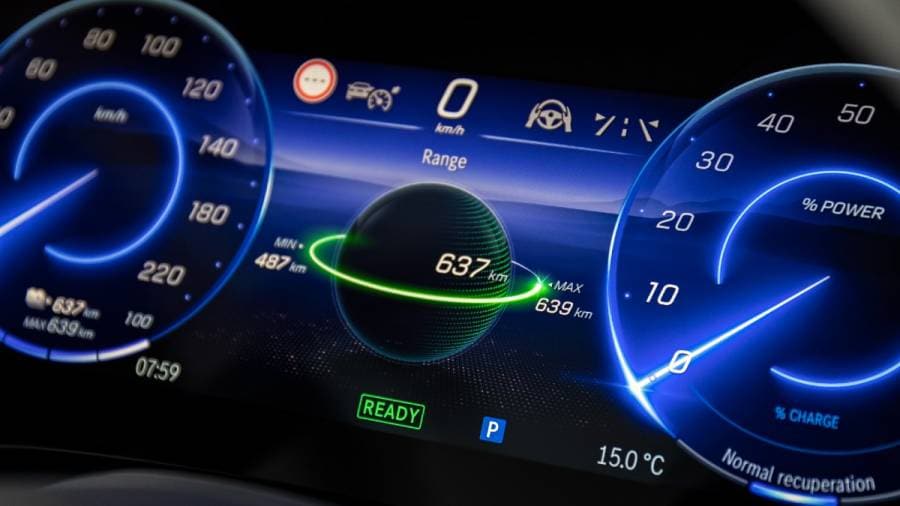
Now it's really these three individual screens all enclosed in glass and seamlessly merged into one massive 56-inch "Hyperscreen" that Mercedes considers the highlight of the interiors. The Hyperscreen comes as standard in the EQS 580, and I'll admit, it can look incredible, especially when you drive through a tunnel, but I found it slightly over the top. Maybe that's because I've spent rather a lot of time in the spartan interiors of a Tesla Model 3 recently. And I do think I prefer the Tesla's iPad-like screen in terms of size, speed and usability. Although Mercedes's MBUX system, with its zero-layer function, is a giant leap from, and a darned sight faster than, their earlier classic display unit. Mercedes's Intelligent Assistant that can be summoned by using "Hey Mercedes" also comes as standard, and makes life a lot easier for the driver. I got the system to turn on the massage function on the driver's seat for me, which she did quite promptly. Getting her to turn it off, however, required a little more goading. But she did helpfully remind me that the rear seats on the 580 that I was driving didn't come with a massage function, much to the dismay of my rear seat passenger.
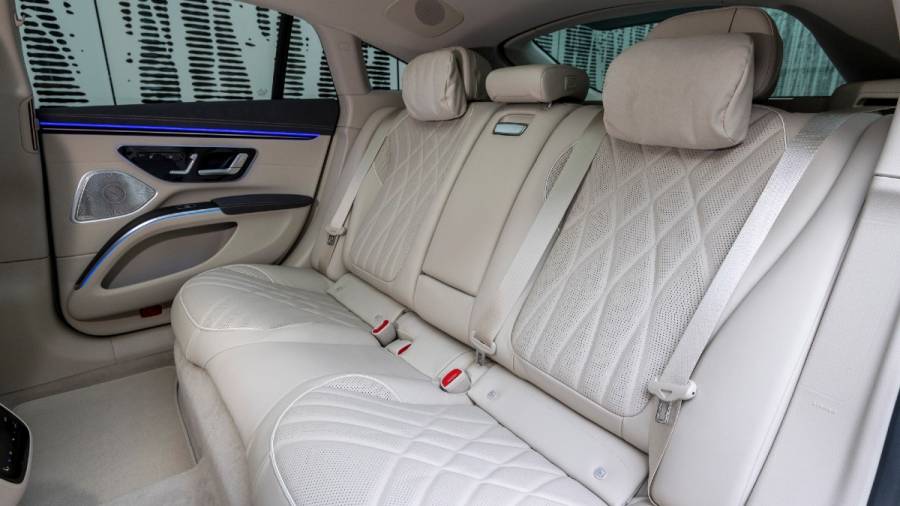
Speaking of the rear seats though, the rear is roomy enough, with ample head space and legroom. And you can customise the rear cabin to your specifications - with the option of adding screens on the back of the front seats, a touch-screen tablet in the armrest, and massage functions too. As with the S-Class, Mercedes's Airmatic suspension with continually adjustable damping ensures that bumps don't filter through into the cabin and bother the potentially chauffeur-driven EQS buyer. Although, while extremely comfortable, the EQS doesn't quite seem to manage the S-Class's "gliding on-air" quality. But the boot is cavernous, offering 610 litres of storage space, which increases to 1770 litres when the split rear seats are folded down. Which means there's enough room for luggage for a weekend trip and then some, even though, unlike several other EVs, there's no "frunk" on this one.
And speaking of doing a weekend trip in the EQS - the substantial range on offer means road trips (even ones that don't involve stopping to charge the battery) are possible. All in all, I did a round trip of around 300km from Zurich to Andermatt and back (although using a somewhat convoluted route) and didn't face any sort of range anxiety. It's also worth noting that at DC charging stations the EQS's li-ion battery is capable of charging rates of 200kW. This means in 15 minutes, you could potentially get a 300km top-up in the EQS 450+, and 260km in the EQS 580. Another important factor that contributes to the car's efficiency and range are the recuperation modes that it comes with, which lead to kinetic energy being recovered when the car decelerates and brakes. The paddles on the back of the steering wheel allow you to switch between D+, D, and D- modes, while D-Auto lets the car decide what it thinks is the best way to recover energy, leading to a significant impact on the range you ultimately eke out of it.
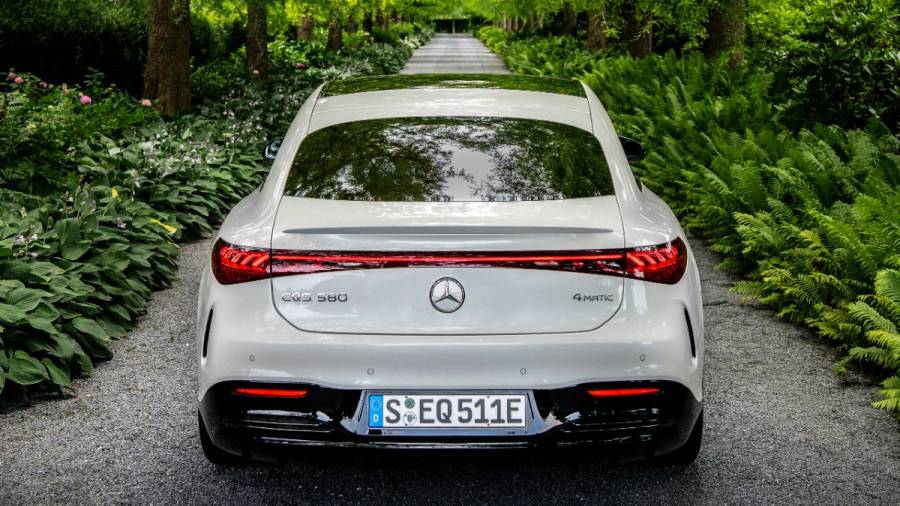
Now, Mercedes has made no secret of the fact that when they were designing and building the EQS, their goal was for it to be the best luxury EV in the world. They wanted it to look good on the outside, be something of a palace on wheels on the inside, and go very long distances without any worry. In my books, the EQS does all these things. But what's far more significant than whether the EQS really deserves the adjective "best" attached to its name, is what the technology it comes with means for the rest of the cars that will soon come out of Mercedes's stable. Not just cars that are built on the EVA platform, but the smaller cars that will be built on the Mercedes Modular Architecture (MMA) platform. If what we've seen in the EQS is anything to go by, Mercedes has its steering turned and all four wheels pointed in the absolute right direction.
Also Read:
All you need to know: Mercedes-Benz EQS all-electric sedan
2020 Mercedes-Benz EQC electric SUV launched in India at Rs 99.3 lakh
Mercedes-Benz to go electric-only by 2030 in certain markets
Also watch,
-NA-
-NA-
503
660
-NA-
-NA-
-NA-
503
660
-NA-
